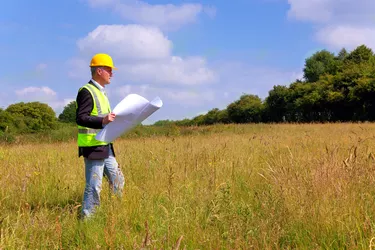
Things You'll Need
Newspapers and ads with property offerings
Real estate brochures with land listings
Access to current sales and FMV in the assessment and property tax registries of appropriate government agency
Internet access
Tip
Use all the information available to get accurate comparable market data and FMV on the land of interest, whether as a buyer or a seller. Real estate agents often provide some free help to enlist themselves as buyer's agents or seller's agents. Find a recommended and reliable agent or broker to help along the real estate trail.
The market comparison approach and Fair Market Value (FMV) of land should be a reflection of the current actual sales prices that owners or sellers of land are getting for their land from willing buyers. The key to determining FMV of land is to have good, complete, and current information on suitable numbers of similar properties sold most recently—typically, in the last two to six months.
Best Sources to Obtain Comp Sales and Fair Market Value
Step 1
Obtain the current sales information of comparable land to the property of interest.The best sources for FMV and comparable sales include the most recent sales records in the county or district courthouse or current tax records and assessments on similar properties. Additional resources include comparable land property sales in the immediate, adjacent and surrounding property districts. In most cases, current sales in a particular neighborhood, subdivision, county, or land district are used almost exclusively by some realtors to determine the fair market value. Many tax assessments are not current or accurate reflections of the actual sales market. By law these assessments should be updated regularly, but sometimes are not. FMV of county's and land districts have in some cases ranged from 80 to 120 percent of actual sale values.
Video of the Day
Step 2
Gather information on five to 10 comparable properties in the area. As many as 20 to 50 have been gathered in making land value determinations when large amounts of money are involved. Determine the approximate FMV or actual sale market value per square foot, meter, or cost per acre of these properties. Determine if the land being offered is over, under or within the price range of the land of interest. Note also the similarities and differences of the properties such as presence of timber, water resources, lay of the land, scenic views and zoning or covenant restrictions. Properties of similar size may have modest or significantly dissimilar values based on the previous factors. Other factors that may not be immediately evident may impact the value and price of property, such as proposed highway projects, subdivision or mall developments, or the possible purchase of property by local, state or federal governments for building facilities such as schools, hospitals or administrative buildings.
Step 3
Choose the market approach to determining land value by looking at comparable sales within a narrowed time frame of two to six months. In some cases, where sales have been few or sporadic, a sales span of 12 to 24 months may be chosen. Dramatic market shifts may occur within a period of a few months, so it is best to have the most recent sales data available. The use of a real estate agent, or lawyer, or both, is encouraged for almost all property transactions.
Video of the Day